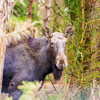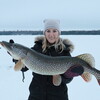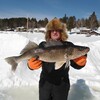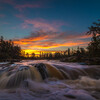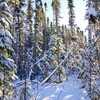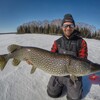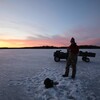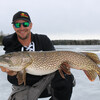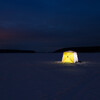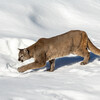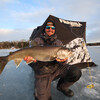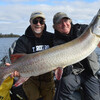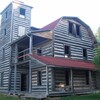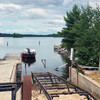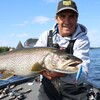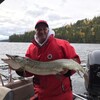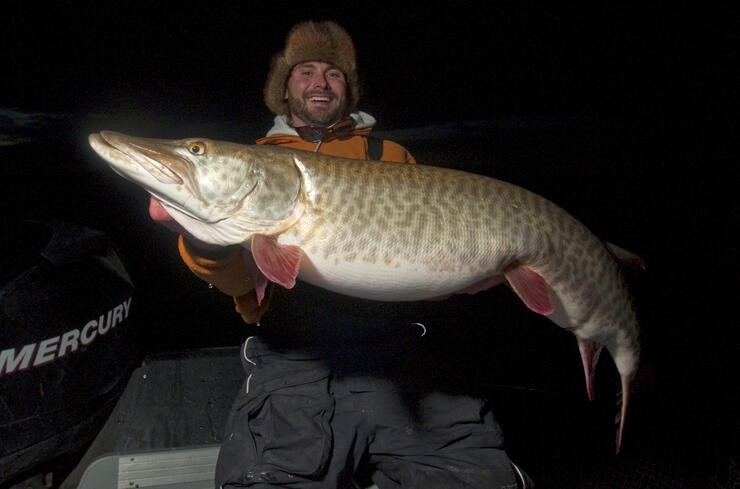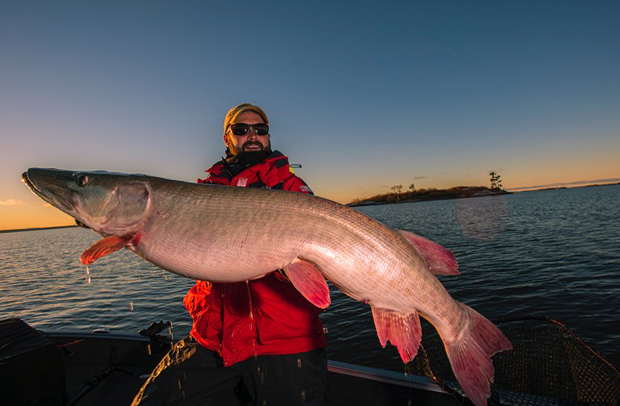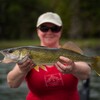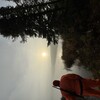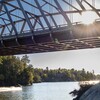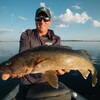Pursuing the “Big Girls”
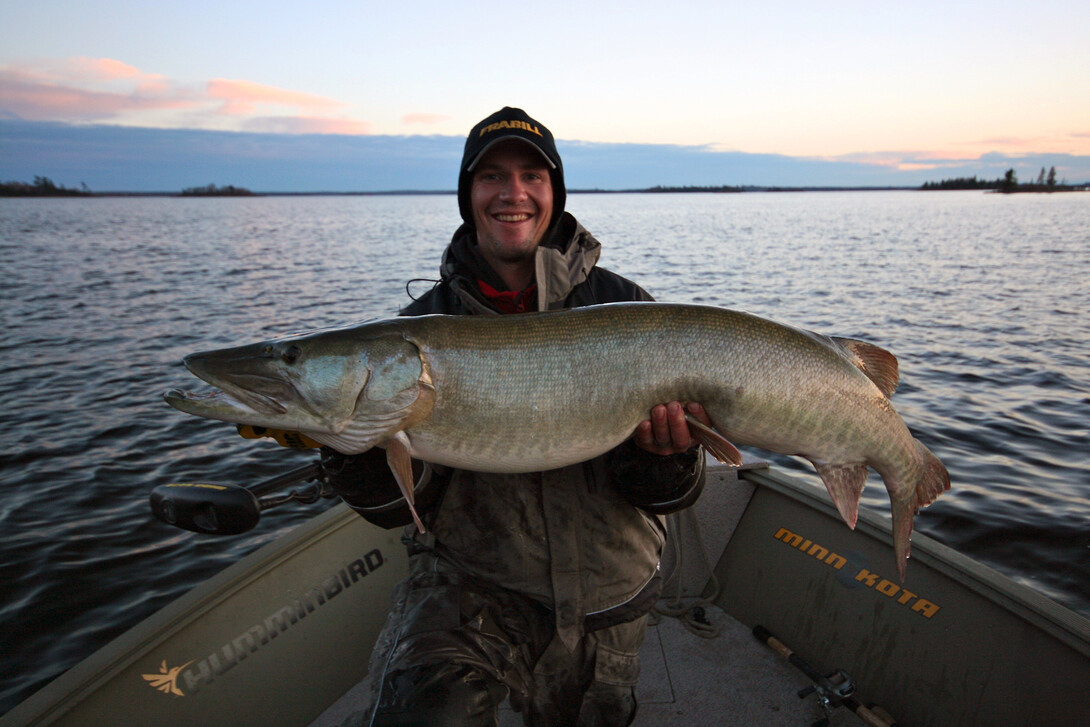
In the muskie fishing community, it’s well known that as the temperature cools down in the fall, the quality of the muskie fishing – and your chance at a giant muskellunge – are probably better than at any other time of the year. It’s also well known that female muskies are generally much larger than males hence the term “Big Girls.” On our Canadian Shield lakes in Ontario’s Sunset Country, the water cools down quite quickly after the Labour Day weekend and what is known as “lake turnover” usually happens in the latter part of September or early October in these parts.
Just before turnover is considered by many muskie anglers as a prime time to catch the big ones as well as a couple of weeks after it occurs. Regardless of when you fish during the fall, my personal experience in trying to catch muskie – and I’m definitely an “amateur” muskie angler – is that the months of September, and October even ultra-chilly November, are definitely the best times to troll for muskie and be successful.
The technique I like to use is to troll close to shore in shallow waters. During the fall, I also increase the speed I’m trolling at – I prefer a consistent speed of around 5 to 7 knots depending on conditions – you can go faster if you a trolling along weed lines or lakes with mud bottoms. I troll a rocky structure close to the shore. Note: the term “know before you go” is important to protect your lower unit, so carefully study the shoreline structure that you plan to troll before you troll it so you know when to turn out to avoid the big rocks that will eliminate your lower unit. I must admit, while I have not lost a lower unit fishing this way, I have damaged my prop so be careful. The usual depths I troll at during the fall are in the 7 to 10-foot range close to shore, but some anglers prefer even shallower water – I don’t have the guts or money to do that, though!
The Lakes Cool Down Quickly Up Here
In our Canadian Shield lakes, as the waters cool rapidly downwards in the fall, and at this time of year muskies seem to hug shoreline structures waiting to ambush passing baitfish or even other larger fish – a 45-inch muskie has no problem eating a 5-pound walleye – so most of the time, I use big lures that dive between 5 and 10 feet. Baitfish move from deeper water to shallower water in the fall so that is another reason the big girls are sitting along the shoreline in ambush mode!
What’s a Planer Board?
I have never tried them, but some muskie anglers use planer boards, a device that allows you to get even closer to shore and with which you can control the depth of your lure, helping you to avoid snags. These are versatile devices and work well with big muskie baits. Remember that under Ontario law, only one line per licensed angler may be in the water at a time, and you should release all muskie you land. Muskellunge are definitely a “catch and release fishery” in Ontario’s Sunset Country, as they should be everywhere.

Choosing the Right Lure is Not Easy
Visiting their websites and following the advice of muskie experts like Joe Bucher, Jim Saric, and Pete Maina on bait selection under a variety of water and temperature conditions is the best advice I can give you in this area, as all three of these guys have caught hundreds of muskies in their lifetime. I haven’t tried all the baits they make or endorse, but of the ones I have tried, I like Bucher Depth Raiders and Shallow Raiders but for the fall and while trolling close to shore, I use shallow raiders. All lures come in different colours so that may be a point of personal preference. My favorite colour is a black/silver or black/white combination, along with green and orange combos.
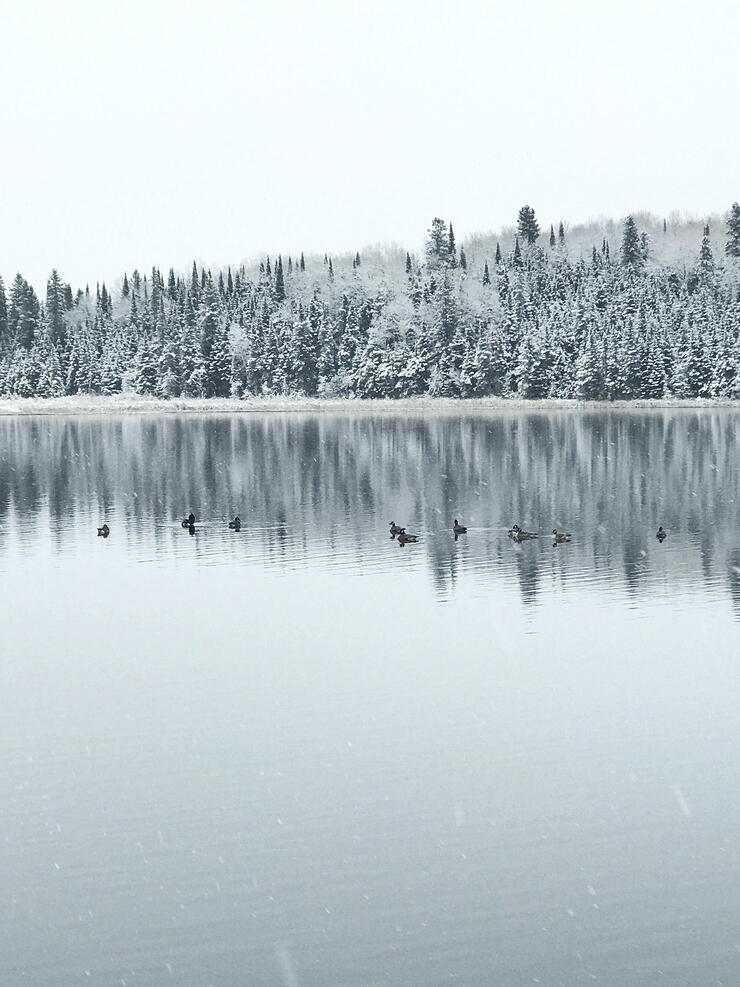
I also like trying a variety of hinged lures that make more than average noise/motion disturbances in the water. You’re looking for a quick strike from the fish when you try this method, so I hope that makes sense. Try what you think works for you and I’m sure you’ll figure it out – I do (only occasionally though, haha)! I bounce my lures right off of the rocks much of the time, so you have to be prepared for your baits to suffer some nicks and scrapes. You may lose a few too – hey it happens!
Fall Muskie Fishing Not for the Faint of Heart
If you don’t like the cold – and I’m talking about Canadian fall cold - while out on a body of water, then fall muskie fishing probably isn’t for you. The good news here is that while it can get quite cold in a boat on our lakes in late September, October, and of course in November if you plan for it during your trip-planning phase, you can deal with cold quite effectively. The first piece of advice I have here is warm boots, and I am talking snowmobile boots or equivalent protection. Hiking boots don’t cut if for 8 hours on our lakes, in a boat in Canada, in the fall. Bring some fishing gloves for reeling in a fish if you get one on the line but also bring a pair of warm mitts for the times (and that is most of the time) when you’re waiting for muskie to strike.
Make sure you have durable water and windproof outer layer along with several inner layers (which you can take a layer off if you find it too warm) and make sure a thin but floatable life jacket goes over your t-shirt as one of the under layers – it could save your life if you accidentally fall off the boat. Water temps up here at this time of year range from 34 degrees in November to around the mid-50 degrees (Fahrenheit) in September. Air temps can range widely as well, from the mid-sixties in September to below freezing in November.
Fall Muskie Trolling Tips
Be Patient!
When you add in the cold, water conditions, wind, and other elements, it can be a long day – especially if the fish are not cooperating. Some days they will and you’ll find yourself catching more than one fish, some may be close to 50 inches long if you’re one of the lucky ones. On other days, all you may catch is Canada, so be prepared for snags if you’re going to troll the shallow waters. My other advice is to bring along lots of food and warm drinks in a large thermos. It will make all the difference.
The conversations with friends and family you’ll have in the boat can be more memorable than the fish you catch – well, maybe not – but it is a good time, to say the least! You should ensure another person knows the areas you’ll be fishing in and the rough time you expect to return in case you have a motor breakdown. A two-way radio transmitter is the best of course. There are few boats on the waters up here, especially in the late fall.
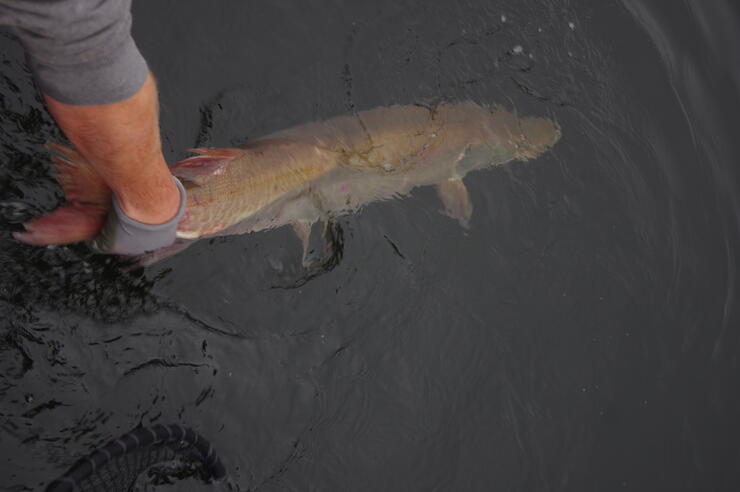
The last point is about me. I would admit to not being an accomplished muskie angler, but I am a very avid one, and I have caught a few muskies using these methods. If you’re an experienced muskie fisherman who knows how to troll for muskie in our cold fall waters then add your tips in the comments section so others can learn from your experience. It is also okay to laugh at my suggestions too – just don’t laugh too hard okay?
Some of our lodges up here specialize in fall muskie fishing so check them out.
Have fun!
Recommended Articles

Is the 1,400 Kilometre Drive to Northwest Ontario For a Fishing Trip Worth it?
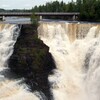
8 must-see waterfalls

6 Ways to Get Your 10,000 Steps This Fall

Top 5 Reasons You Should Be Fishing in Morson, Ontario

Discover The Winnipeg River

Enjoy Sunset Country's Fall Colours on Your Next Road Trip

Fishing in the Fall?

6 Reasons to Book a Fall Vacation to Sunset Country

10 Reasons to Avoid Ontario’s Sunset Country

Heading Across Canada?

A Guide to Sunset Country Museums
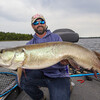
The Promised Land: Best Muskie Fishing in Ontario

Fall Fishing Tips
5 Essential Boreal Experiences in Ontario's Sunset Country

5 Obscure Facts About Northwestern Ontario: Were You Aware of These?

Great Food in Relatively Unknown Places
Outdoor Medicine

A Guide to Bringing Your Pets on Vacation to Canada

There's more than just fishing in the Red Lake Region

5 Amazing Sights You Can Only See By Boat

Going Fishing in Canada?

Going fishing in Ontario?

Outdoor Adventure in Ontario's Northern Paradise
Planning A Family Fishing Trip to Canada

Tips from a Fishing Legend

